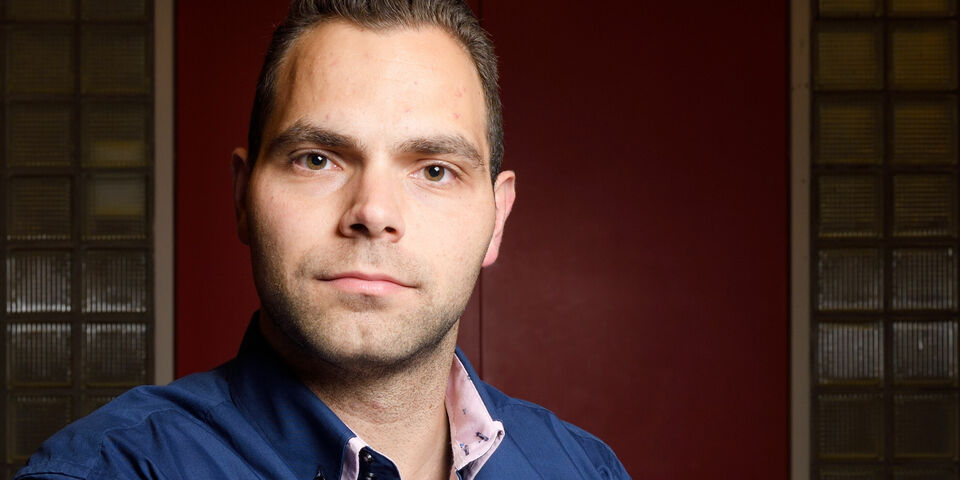Home Stretch | A mirror that tracks stars
On a mountain in Chile's Atacama desert the world's largest optical telescope is currently under construction: the Extremely Large Telescope (ELT). The ELT's primary mirror has a diameter measuring 39 meters and consists of almost 800 segments, each of which is operated using three position actuators. PhD candidate Arjo Bos designed actuators that satisfy the extreme requirements of this giant telescope.
The larger the telescope, the more light you can capture, and the more accurate the images you can produce. Given this, it is expected that the Extremely Large Telescope - which will be equipped with a system that corrects for atmospheric distortions - will ultimately be able to 'see' sixteen times more clearly than the Hubble Space Telescope, known for the beautiful pictures it takes while in orbit around the earth. This makes the ELT well suited to producing images of planets outside our solar system, and for studying the earliest solar systems and the effects of super-massive black holes.
Nanometer accuracy
To live up to these expectations, the surface of the primary mirror, which captures visible and infrared light out of space, must be accurately shaped to the incredible level of 25 nanometers. By way of comparison: a human hair is a thousand times thicker. And, naturally, this in turns places extreme demands on each of the almost 800 segments weighing 270 kilos (including suspension) that make up the mirror. After all, the mirror as a whole must be able to track the stars in the sky as they pass by, and be able to focus on a given point in the firmament.
“These actuators must enable the mirror segments to move across a distance of 1.5 centimeters, with an accuracy of just over 1 nanometer,” explains Arjo Bos. “Above all, the energy loss must remain minimal. When a particular star is being sought, they mustn't dissipate more than 5 watts, and when the stars are being tracked no more than a single watt – otherwise the heat generated causes the mirror's surface to deform.” Bos recently gained his doctorate in the Control Systems Technology group of the Department of Mechanical Engineering for his design, analysis and realization of an actuator suitable for the ELT.
In cooperation with TNO Optomechatronics in Delft, Bos managed to come up with a dual-stage actuator, built from a screw spindle and what is known as a voice coil, that satisfied all the requirements. “Including sustainability, because they have to last more than thirty years, and be reasonably priced. You see, you need some 2,400 of them for the telescope, three per mirror segment. We managed to achieve this by producing a smart design, and choosing relatively cheap hardware.”
Not used
By a twist of fate, however, Bos's design will not be incorporated into the ELT, he explains. “For this project offered by the European Southern Observatory, tenders could be submitted by consortia consisting of a development partner – in this case TNO in cooperation with our group - and a partner that would actually make the actuators. Unfortunately, the market party we chose has withdrawn for financial reasons, and we have not been able to find a replacement.”
As a consequence, the Extremely Large Telescope will be equipped with actuators made in Germany. But fortunately the prototypes made by Bos are serving a useful purpose: they are now being used at TNO to test the suspension of the mirrors. And there is an outside chance that one day his design will get a second chance: “You never know, perhaps they might want to build a large telescope of this kind in India or China sometime soon.”


Discussion